As we enter the winter season, the days become darker and snow blankets the earth. Although the trees are bare and animals are in hiding, there are still plenty of special things to witness all around. Plus, cold weather leads to creative indoor fun activities and cozy foods. Help your students relate to the changes in the world around them with these wonderful facts about winter. Bundle up and enjoy!
Plus, click the button below to receive a Google Slideshow with all of our Facts about Winter in an easy-to-present format!
Fun and Fascinating Facts About Winter
Winter is the coldest season of the year.
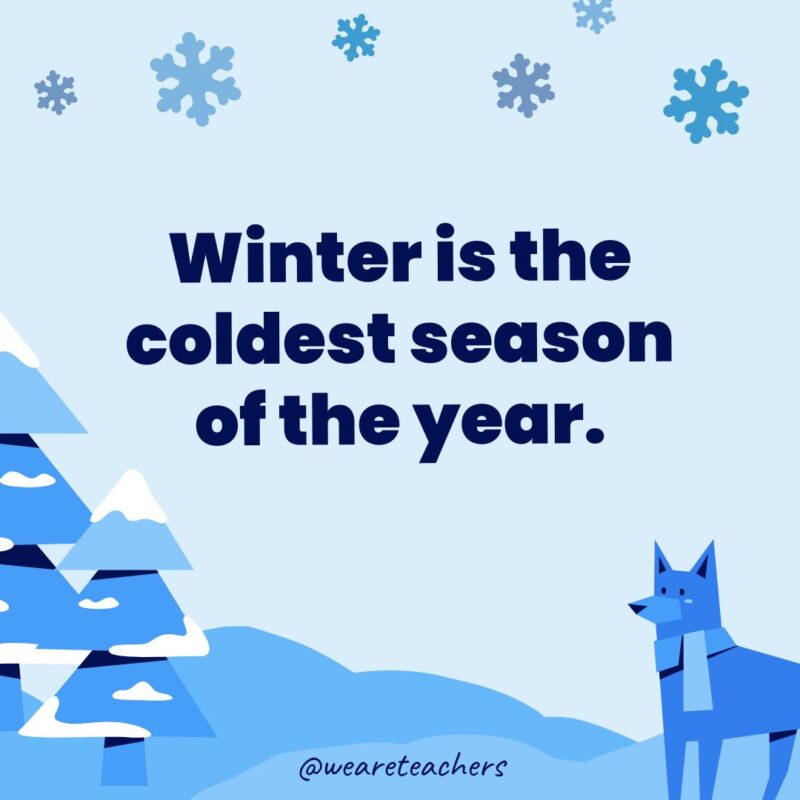
States with the coldest winters include Alaska, North Dakota, Wyoming, Minnesota, and Montana.
Not all places have snowy winters.

These states include Florida, Hawaii, Texas, Louisiana, and Georgia. They are too warm for snow!
Water freezes at 32°F (0°C).
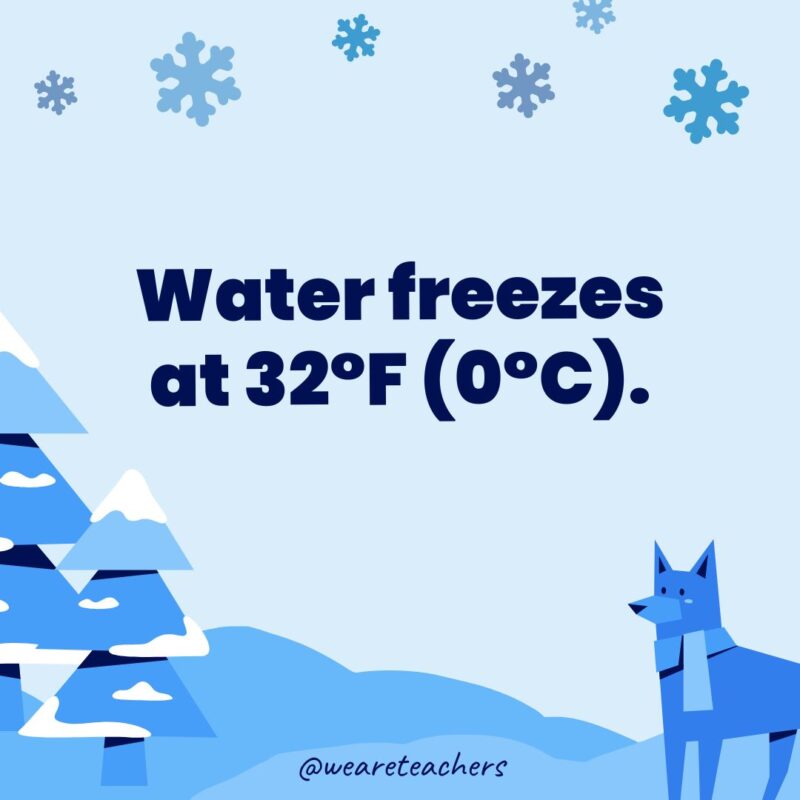
When the temperature drops below this point, water turns into ice. Snow forms if there is moisture in the air. Building snowmen and having snowball fights is always fun when there is lots of snow!
No two snowflakes are exactly alike.

Snowflakes form when water vapor freezes onto dust particles in the air, creating unique crystal shapes.
The first official day of winter is called the winter solstice.
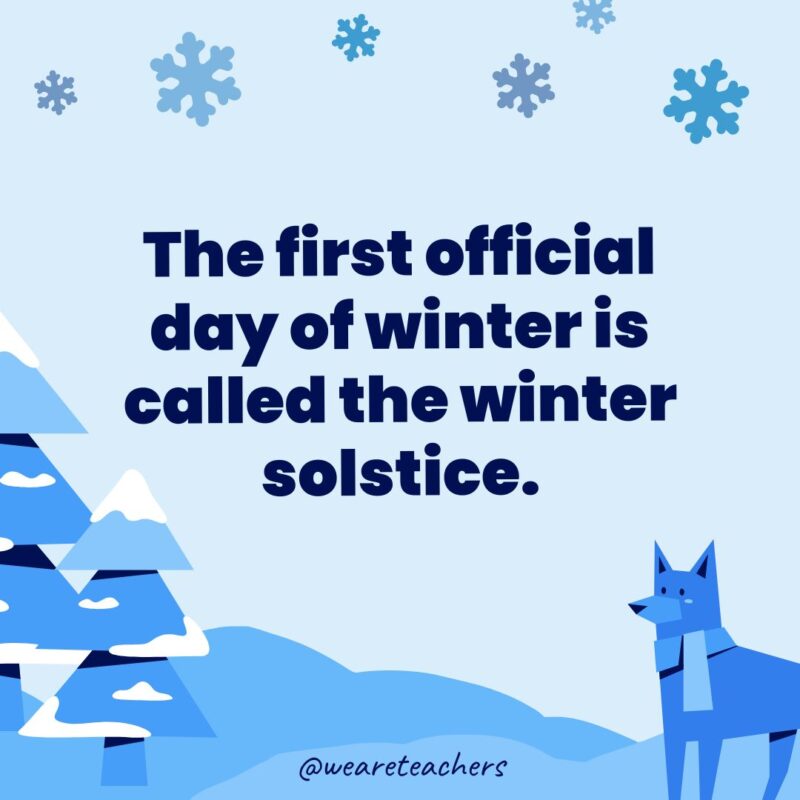
The winter solstice typically begins on December 21 and is the shortest day and longest night of the year.
There are more hours of darkness than light in winter.
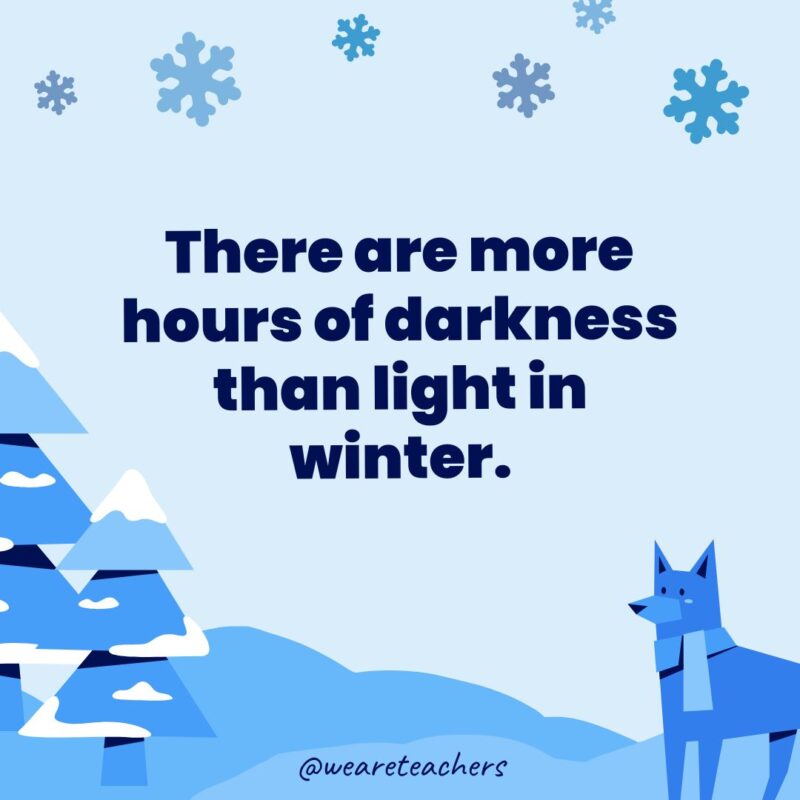
We see more darkness than light because the Earth’s tilt makes the sun appear lower in the sky.
Alaska has only a few hours of daylight in the winter.

Depending on the city, Alaskans only see 3 to 6 hours of daylight in December and January. The Alaska borough of Utqiagvik stays dark for 67 days straight! This may be one of the most surprising facts about winter.
Polar nights are days without sunlight.
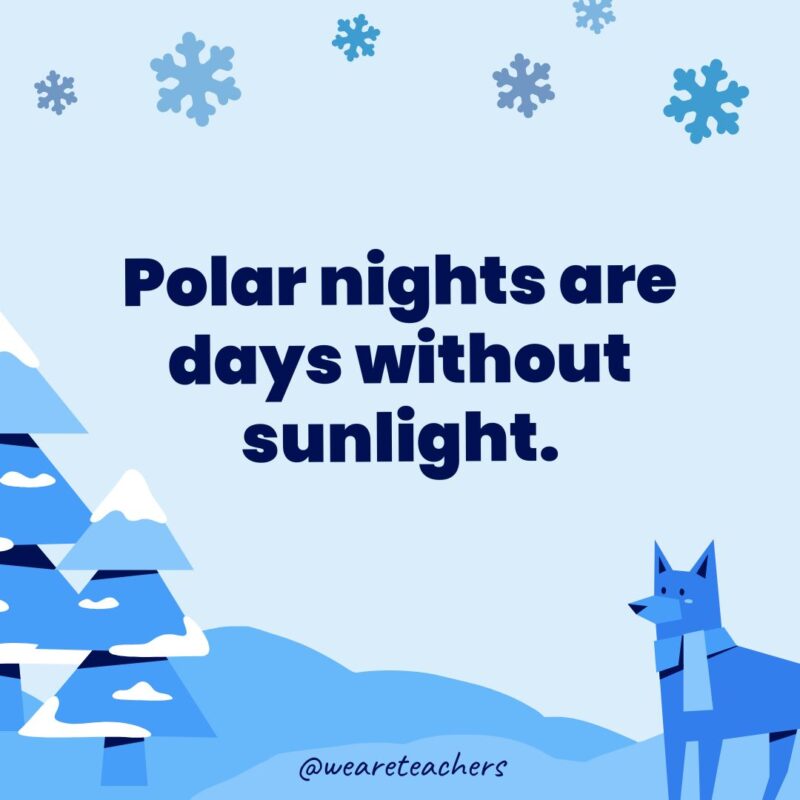
Polar nights occur in areas of the world that are far north, including parts of Norway, Sweden, Canada, Greenland, and Russia. They can last for many days or even months!
Many animals hibernate during the winter.

Hibernation is a deep sleep that helps animals conserve energy when food is not available. This goes on for weeks or months, depending on the species. Check out this list of interesting animals that hibernate in winter plus a free set of printable hibernation worksheets.
Some animals have fur that adapts to winter weather.

Some animals grow thicker fur during winter while others have fur that completely changes color. For example, the fur of the arctic fox and the fur of polar bears turns white in winter to provide camouflage in the snow.
Penguins have special adaptations for cold weather.

Penguins have a thick layer of fat (blubber) and tightly packed feathers to keep them warm. They huddle in big groups, too, when needed. Snuggle time!
Some animals migrate to warmer places in the winter.
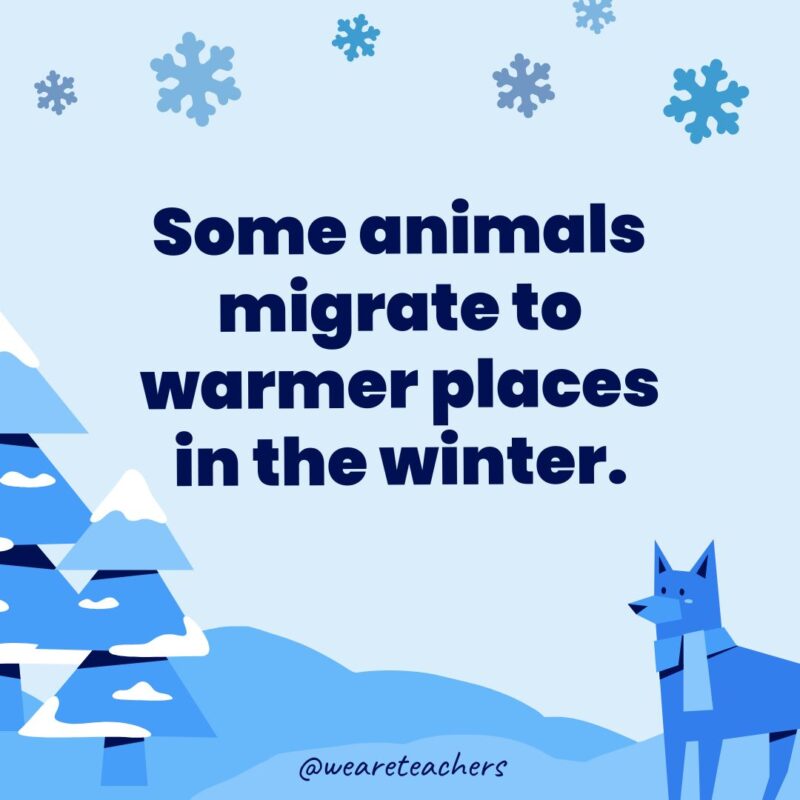
Also known as flying south, these animals include fliers like birds and butterflies. For example, the monarch butterfly travels thousands of miles to avoid the cold.
Animals gather and store food in the fall so they have food in the winter.

They often hide nuts and seeds in the ground or trees, the way we use our pantries and refrigerators. How smart!
Most trees lose their leaves in winter.

Evergreen trees, like pines and firs, keep their leaves all year round. This is why they are used as Christmas trees.
Lakes, ponds, and rivers can freeze over in winter.

This forms solid sheets of ice. People often go ice-skating or play ice hockey on frozen water. Just be careful and check with an adult first!
Comfort foods and hot beverages are enjoyed in winter.

Comfort foods are hearty foods like thick soups, stews, and chilis that warm your belly. Hot cocoa with marshmallows on top is always a tasty sweet treat! Root vegetables like potatoes, carrots, and turnips are also common recipe ingredients since they store well during cold months.
The Winter Olympics are held every four years.
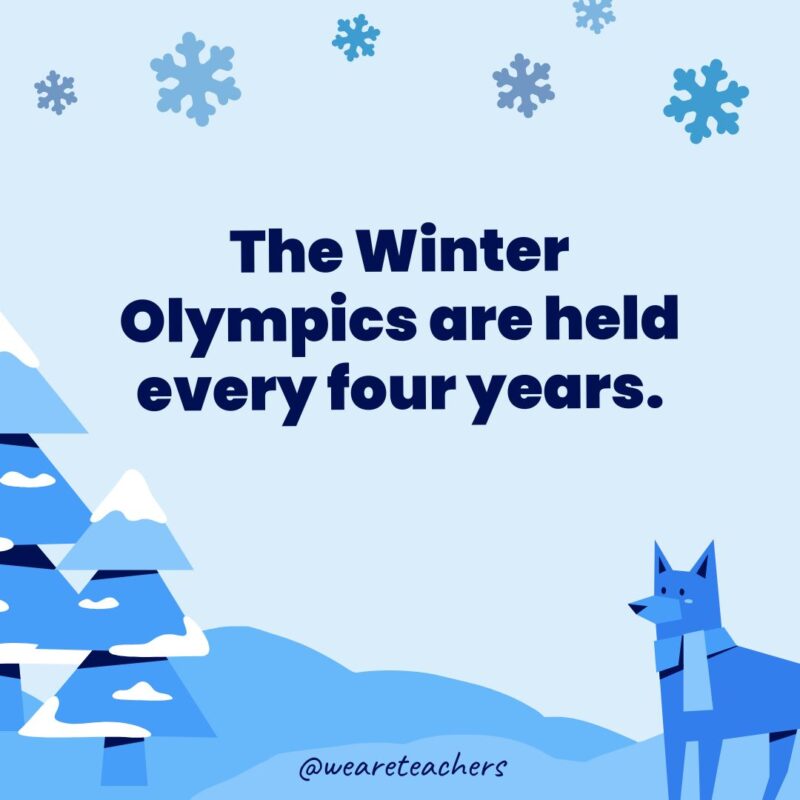
Popular featured sports include skiing, ice hockey, snowboarding, figure skating, bobsledding, and curling.
The first Winter Olympic Games were held in Chamonix, France, in 1924.
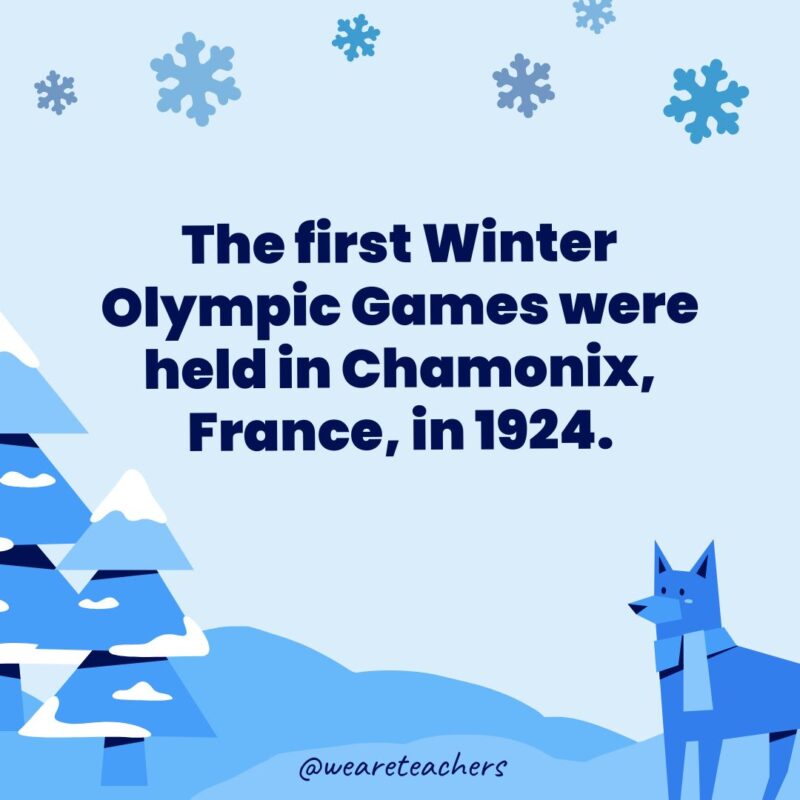
The next Winter Olympic Games will be held February 6 through 22, 2026, in Milano Cortina, Italy.
The northern lights occur in places near the Arctic Circle in winter.

Also known as aurora borealis, these colorful lights are amazing displays in the night sky. They occur when particles from the sun interact with the Earth’s magnetic field.
Hanukkah, Christmas, Kwanzaa, and New Year’s are celebrated in the winter.
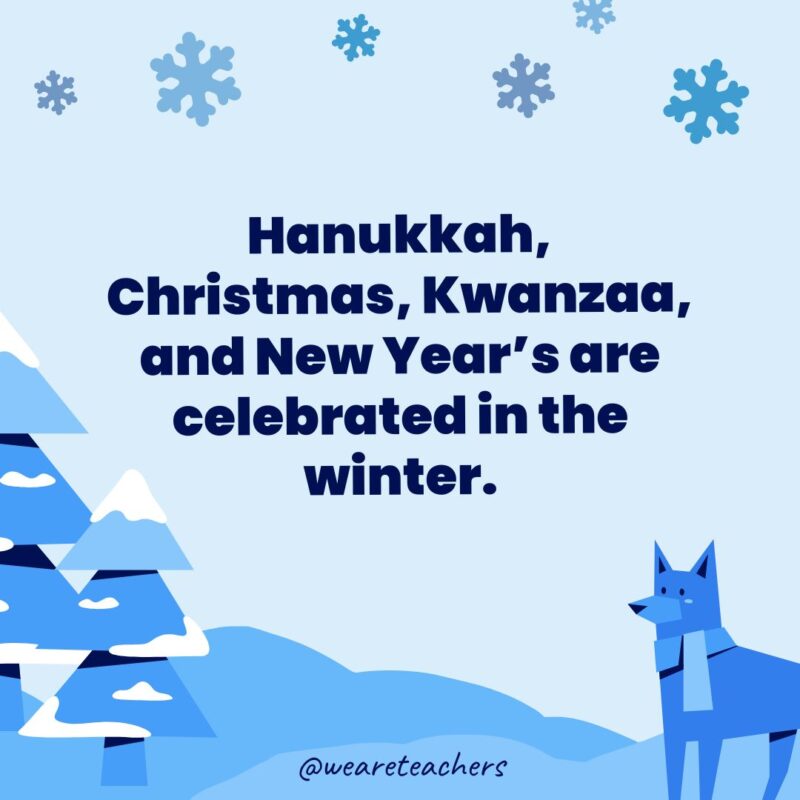
People decorate their homes, gather with family and friends, exchange gifts, and enjoy special holiday meals during this festive season. Party on!
Some constellations are more visible in the night sky during winter.
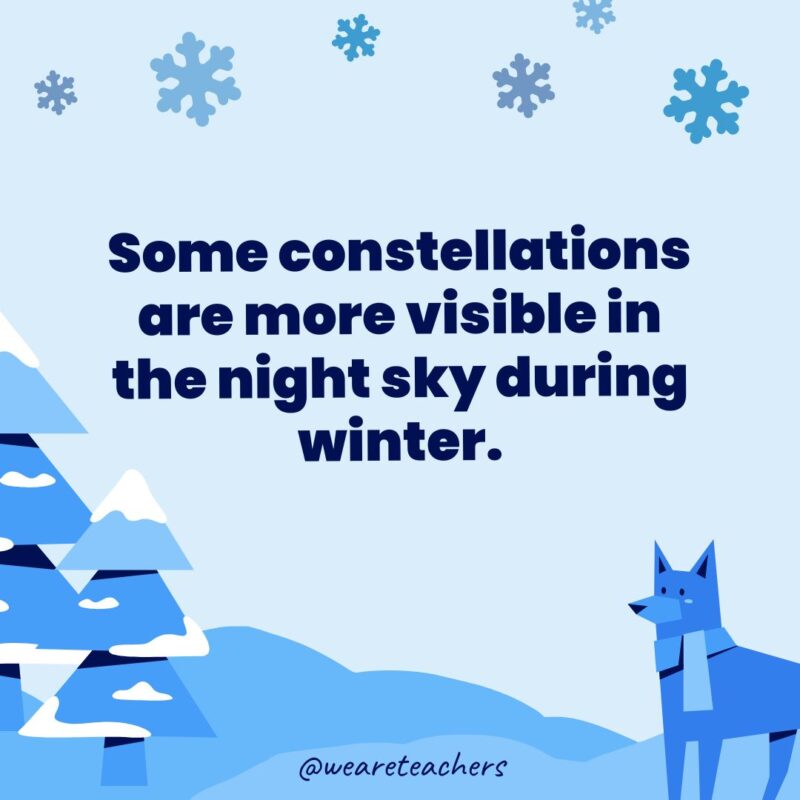
Orion the Hunter is one of the easiest constellations to spot during winter. Others include Auriga, Canis Major, Canis Minor, Carina, Eridanus, Gemini, Monoceros, and Taurus.
Many countries celebrate the winter season with special events.

Quebec, Canada, hosts a famous Winter Carnival with ice sculptures, parades, and games. You can even stay in a hotel made entirely of snow, called Hotel de Glace (Ice Hotel)! The Sapporo Snow Festival in Japan is a similar event celebrating ice and snow.
Frost forms when moisture in the air freezes into tiny ice crystals.

The ice crystals are usually seen on cold mornings and create a sparkly, glittery sheen.
A blizzard is a severe winter storm.

It consists of strong winds, heavy snowfall, and freezing temperatures. These storms can cause whiteout conditions, making it difficult to see or travel. Hunker down in a safe place during a blizzard!
People who leave their homes up north for warmer places in winter are called snowbirds.

This is because these humans mimic the habits of birds in search of warm winters! Florida has more snowbirds than any other state. Many of them flock down from the Northeast and upper Midwest regions of the United States and eastern Canada.
Get my Google Slides presentation on facts about Winter!

If you loved our facts about Winter, click the button below to receive your own copy. The facts are formatted to share with your classroom or have a laugh by yourself!






Leave a Reply